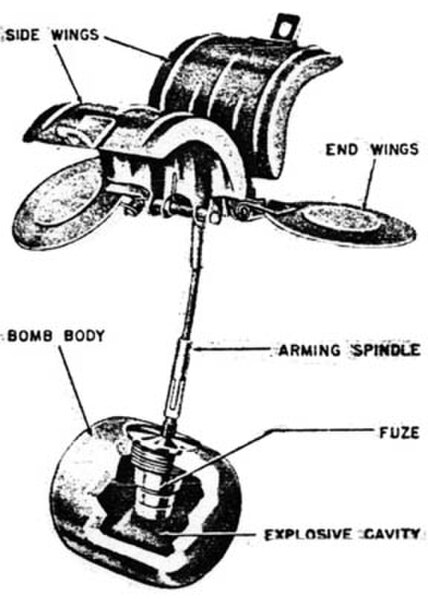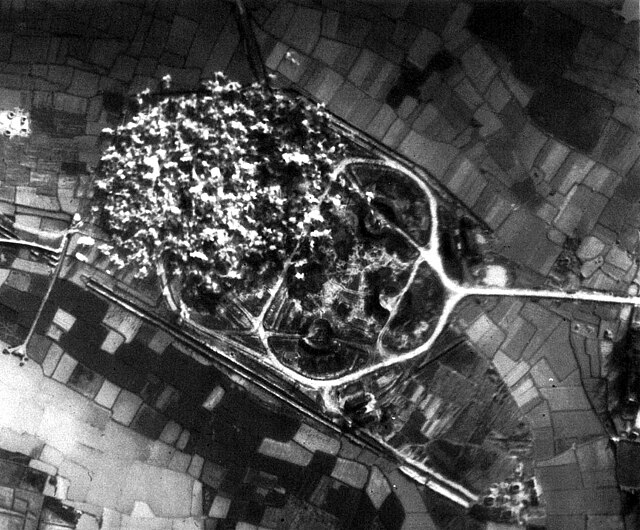The Butterfly Bomb was a German 2-kilogram (4.4 lb) anti-personnel submunition used by the Luftwaffe during the Second World War. It was so named because the thin cylindrical metal outer shell which hinged open when the bomblet deployed gave it the superficial appearance of a large butterfly. The design was very distinctive and easy to recognise. SD 2 bomblets were not dropped individually, but were packed into containers holding between 6 and 108 submunitions e.g. the AB 23 SD 2 and AB 250-3 submunition dispensers. The SD 2 submunitions were released after the container was released from the aircraft and had burst open. Because SD 2s were always dropped in groups the discovery of one unexploded SD 2 was a reliable indication that others had been dropped nearby. This bomb type was one of the first cluster bombs ever used in combat and it proved to be a highly effective weapon. The bomb containers that carried the SD 2 bomblets and released them in the air were nicknamed the "Devil's Eggs" by Luftwaffe air and ground crew.

SD 2 - Closed: fuze is not yet armed
SD 2 - Open: wings have flipped open and screw threads at the base of arming spindle are visible: fuze is now armed
Photo of an SD 2 from Civil Defence Training Pamphlet No 2: Objects Dropped From The Air (3rd Edition).
AB 23 submunition dispenser.
A cluster munition is a form of air-dropped or ground-launched explosive weapon that releases or ejects smaller submunitions. Commonly, this is a cluster bomb that ejects explosive bomblets that are designed to kill personnel and destroy vehicles. Other cluster munitions are designed to destroy runways or electric power transmission lines.
U.S. Honest John missile warhead cutaway around 1960, showing M134 bomblets filled with Sarin
Half of a surface-to-air missile site in North Vietnam blanketed in exploding bomblets dispersed by a U.S. cluster munition, Vietnam War
A cluster bomb is dropped at the Nightmare Range in South Korea
SD2 Butterfly Bomb circa 1940. Wings rotate as bomb falls, unscrewing the arming spindle connected to the fuze.







